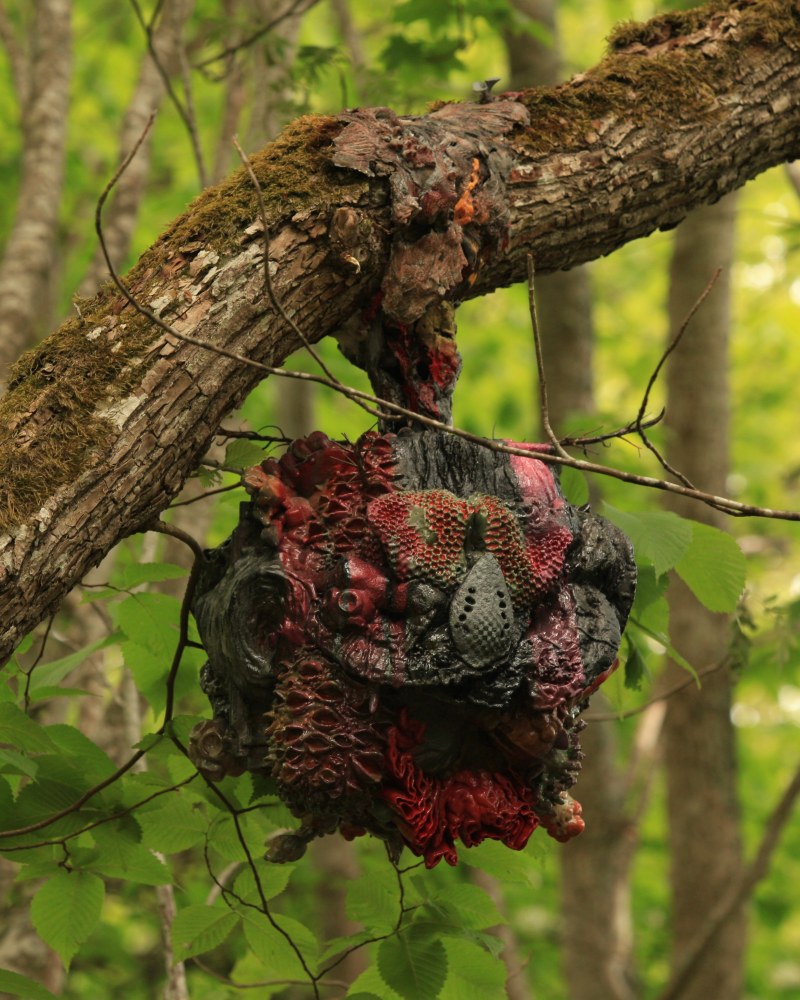
Adrián Villar Rojas reimagines Art Sonje Center as a sculptural experiment in time and space, for his first solo exhibition in Korea.
In this expansive environmental commission, Adrián Villar Rojas dismantles the institutional apparatus of Art Sonje Center to transform the building into a sculptural ecosystem. For Villar Rojas, the museum becomes not a site of preservation, but one of decomposition, mutation, and inheritance—by non-human, post-human, and synthetic agents. Exhibition space becomes terrain: feral, unstable, indifferent to spectatorship.
For the first time in Art Sonje Center’s history, a site-specific installation occupies all four floors, including corridors, stairwells, restrooms, the cinema, and peripheral spaces. The entrance is blocked by a mound of earth; all temporary partitions are removed, and walls and columns are stripped to their core. Soil, fire, and plant life are introduced, exposing the institution to the outside world and blurring boundaries between interior and exterior, ecological and institutional. Exit signs become ambient lighting, while humidity and temperature controls are dismantled, subjecting the building to external thermodynamic forces.
At the heart of the exhibition is a constellation of chimerical sculptures from Villar Rojas’s ongoing series The End of Imagination (2022–ongoing), whose haunting, otherworldly forms appear excavated from an unknowable future. First presented at the Art Gallery of New South Wales (2022), Helsinki Biennial (2023), and Foundation Beyeler (2024), the series stems from the artist’s “Time Engine”—a bespoke digital simulation tool that merges video game engines, artificial intelligence, and speculative world-building. The Time Engine generates synthetic worlds populated by evolving life forms, architectures, ecologies, and sociopolitical conditions.
Between 2021 and 2024, Villar Rojas and his team ‘downloaded’ these virtual sculptures and began the process of reconstituting them physically, faithfully preserving traces of their digital journeys.
Created in a temporary workshop in Rosario, Argentina, the sculptures are layered composites of organic and inorganic materials: metals, concrete, plastics, soil, glass, resin, salt, tree bark, auto parts, and more—each embedded with both human and machine labor. Villar Rojas says:
“These digital ecologies generate things—just as Earth produces birds, trees, rocks, and machines. This approach reverses the core ontology of the creative act. I many times say, when talking about this family of works, that ‘I model worlds, and the worlds model “sculptures” for me.”
Emerging at a moment when humanity teeters at the edge of its own continuity, Villar Rojas’s work inhabits the liminal space between extinction and inheritance. Reflecting on the exhibition title, the artist says:
“When I speak of The Language of the Enemy, I’m pointing toward a deep prehistory of meaning-making. We, Homo sapiens, didn’t invent symbolism in isolation; we evolved alongside other human relatives—Neanderthals, Denisovans—and in those encounters, hostile and intimate, competitive and collaborative, something passed between us. Tools, gestures, fire—but also the first sparks of symbolic thought, of meaning creation. The exhibition’s title gestures to that paradox: the enemy—this manifestation of pure otherness—is alien and threatening, yet also the mirror through which we first recognized ourselves. Today, I think we are again at such a threshold—facing new “others,” synthetic intelligences, whose languages we barely comprehend. These intelligences are here, coexisting with us; we pass knowledge to them, even as we sense that, in doing so, we may be preparing for our own disappearance.”
This exhibition is the culmination of Villar Rojas’s long-standing engagement with Korea, including the Real DMZ Project (2014–ongoing), the 5th Anyang Public Art Project (2016), and the Gwangju Biennale (2018, 2021). For the Art Sonje Center exhibition, a team of eleven long-time collaborators—many working with Villar Rojas since 2009—traveled from Argentina to Seoul to fabricate the exhibition on site for six weeks. Operating as a hybrid between hive mind, theater troupe, and terraforming agency, the team transformed Art Sonje Center into a hand-made, living ecosystem. Adrián Villar Rojas: The Language of the Enemy also commemorates the inaugural exhibition held thirty years ago at Art Sonje Center's location, which was a pivotal moment in the establishment of the Center.
.